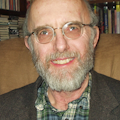OFC exhibitors face challenges of high volume
The overarching theme at the Optical Fiber Communication Conference (OFC) in Anaheim, CA, in March was clearly "high volume"—of attendance at the show and of the manufacturing plans of exhibitors. Record attendance of about 38,000 people was more than twice last year's attendance of 17,000, despite a recent downturn in the economy and layoffs affecting the fiber industry.
Conference organizers were prepared for 29,000 attendees, but got 7,000 extra walk-in registrants the first day, causing three-hour waits in lines and a pedestrian traffic headache at the Anaheim Convention Center. More than 977 exhibitors were spread over two floors.
Outside the registration area, however, fiberoptics companies competed for long lines of their own. Marconi (London, England) featured a Formula One racecar on the second level of its booth, touting Marconi communications technology. Ciena (Linthicum, MD) rigged up its new optical router to rise every few minutes from a pile of rusted legacy equipment accompanied by clouds of mist and loud music. Corning (Corning, NY) and JDS Uniphase (Brampton, Ontario, Canada) competed for "biggest booth" on either side of one aisle; JDSU filled 11,700 sq ft on one level.
Considering the excitement generated by the conference, the growth of the fiberoptics industry appears to be in full-tilt. However, Corning began its market overview session by announcing that expected growth for 2001 revenues in photonic technologies would be less than half previous expectations. Corning also adjusted its outlook for 2001 pro forma earnings down by $0.10 to $0.20 to about $1.25 per share. John W. Loose, president and CEO of Corning, said the new outlook indicates that a meaningful recovery will occur much more slowly than previously anticipated—a statement mirroring that of Cisco just a week earlier.
Predictably, some vendors noticed fewer investors at the show. "Last year, one out of every three visitors to our booth was a finance person," said Robert Drouse of VLOC (New Port Richey, FL). "This year, we had just one, looking for general information on the market."
Despite the cautious outlook, high-volume manufacturing was a strong theme. Many exhibiting companies were poised to begin automated manufacturing to bring down cost and lead-time of products. Veeco (Plainville, NY), Axsys Technologies (Manchester, CT), and kSaria (Wilmington, MA) showcased new automation systems for components and fiberoptics. Kymata (Livingston, Scotland) announced the opening of a 50,000-sq-ft facility to triple production of arrayed waveguide gratings and optical channel power monitors. Similarly, Emcore (Somerset, NJ) recently opened a new 36,000-sq-ft facility in Albuquerque, NM, that will triple manufacturing capacity to one million vertical-cavity surface-emitting lasers.
One forward-looking trend is the infusion of proven semiconductor manufacturing techniques into fiberoptic components manufacturing. "Semiconductor companies know about high volume," said Ronald Reedy, founder and CTO of Peregrine Semiconductor (San Diego, CA). "A digital watch chip costs $0.10, but not because it's easy to make. It's because we make 500,000 just as easily as we make one. The fiber industry is discovering that volume manufacturing drives innovation, not the other way around."
Off the exhibit floor
The conference also included 79 short courses taught by leading experts in the field and several hundred technical papers. Postdeadline papers were presented to packed ballrooms the day after exhibits closed, despite the later-than-usual date. Out of several "hero" papers, a team at NEC Corporation (Japan) led by Kiyoshi Fukuchi announced a record ultra-dense WDM transmission of 10.92 Tbit/s over 117 km of a single fiber using the C-, L-, and S-bands. To achieve this capacity, the team developed a new gain-shifted thulium-doped fiber amplifier (TDFA) with low polarization-mode dispersion characteristics and a wide bandwidth of more than 30 nm. Whereas previous experiments of 6.4 Tbit/s showed loss in the S-band, the TDFA allowed a low noise figure comparable to the C- and L-bands. The technique used polarization interleave multiplexing combined with wavelength-polarization demultiplexing for 50-GHz-spaced 40-Gbit/s channel WDM signals.
While NEC claimed the record for highest transmission capacity, a group from Alcatel set a new record for transmission efficiency, 1.28 bit/Hz of optical frequency range used. Sebastien Bigo of Alcatel Research and Innovation (Marcoussis, France) and colleagues stayed within the C- and L-bands of erbium-fiber amplifiers, limiting total data rate to 10.2 Tbits/s. Bigo's group spaced 40-Gbit/s channels at alternating intervals of 50 and 75 GHz, using 30-GHz filters to pass one side band from each signal. This gave spectral efficiency of 0.64 bit/Hz with 128 channels in the C- and L-bands. Then they used polarization-division multiplexing to double the transmission capacity of the system to 256 optical channel over 100 km of nonzero dispersion-shifted fiber. The group reported error-free operation with forward error correction. NEC's system achieved efficiency of only 0.8 bit/Hz.
A team from Lucent Technologies (Murray Hill, NJ) and Agere Systems (Allentown, PA) reported at the postdeadline session that all-optical switches are getting bigger. At last year's OFC postdeadline session, a team from Lucent's Bell Labs reported a MEMS-based optical crossconnect with 112 inputs and 112 output terminals, and a demonstrated switching capacity of 35.8 Tbit/s. This year a large team led by R. Ryf reported a 1296-port transparent MEMS optical crossconnect with insertion loss of 5.1 dB, and worst-case crosstalk of 38 dB. With two-axis tilt, the 1296-element MEMS mirror could route signals between arrays of 1296 input and output fibers. They reported that their test system could switch an input DWDM signal consisting of 40 optical channels each at 40 Gbit/s, a total rate of 1.6 Tbit/s. From that, they extrapolated a total possible throughput of a staggering 2.07 Pbits/s if all input and output ports were fully populated.
Next year's OFC will be held again in Anaheim, from March 17 to 22.
About the Author
Valerie Coffey-Rosich
Contributing Editor
Valerie Coffey-Rosich is a freelance science and technology writer and editor and a contributing editor for Laser Focus World; she previously served as an Associate Technical Editor (2000-2003) and a Senior Technical Editor (2007-2008) for Laser Focus World.
Valerie holds a BS in physics from the University of Nevada, Reno, and an MA in astronomy from Boston University. She specializes in editing and writing about optics, photonics, astronomy, and physics in academic, reference, and business-to-business publications. In addition to Laser Focus World, her work has appeared online and in print for clients such as the American Institute of Physics, American Heritage Dictionary, BioPhotonics, Encyclopedia Britannica, EuroPhotonics, the Optical Society of America, Photonics Focus, Photonics Spectra, Sky & Telescope, and many others. She is based in Palm Springs, California.
Jeff Hecht
Contributing Editor
Jeff Hecht is a regular contributing editor to Laser Focus World and has been covering the laser industry for 35 years. A prolific book author, Jeff's published works include “Understanding Fiber Optics,” “Understanding Lasers,” “The Laser Guidebook,” and “Beam Weapons: The Next Arms Race.” He also has written books on the histories of lasers and fiber optics, including “City of Light: The Story of Fiber Optics,” and “Beam: The Race to Make the Laser.” Find out more at jeffhecht.com.

